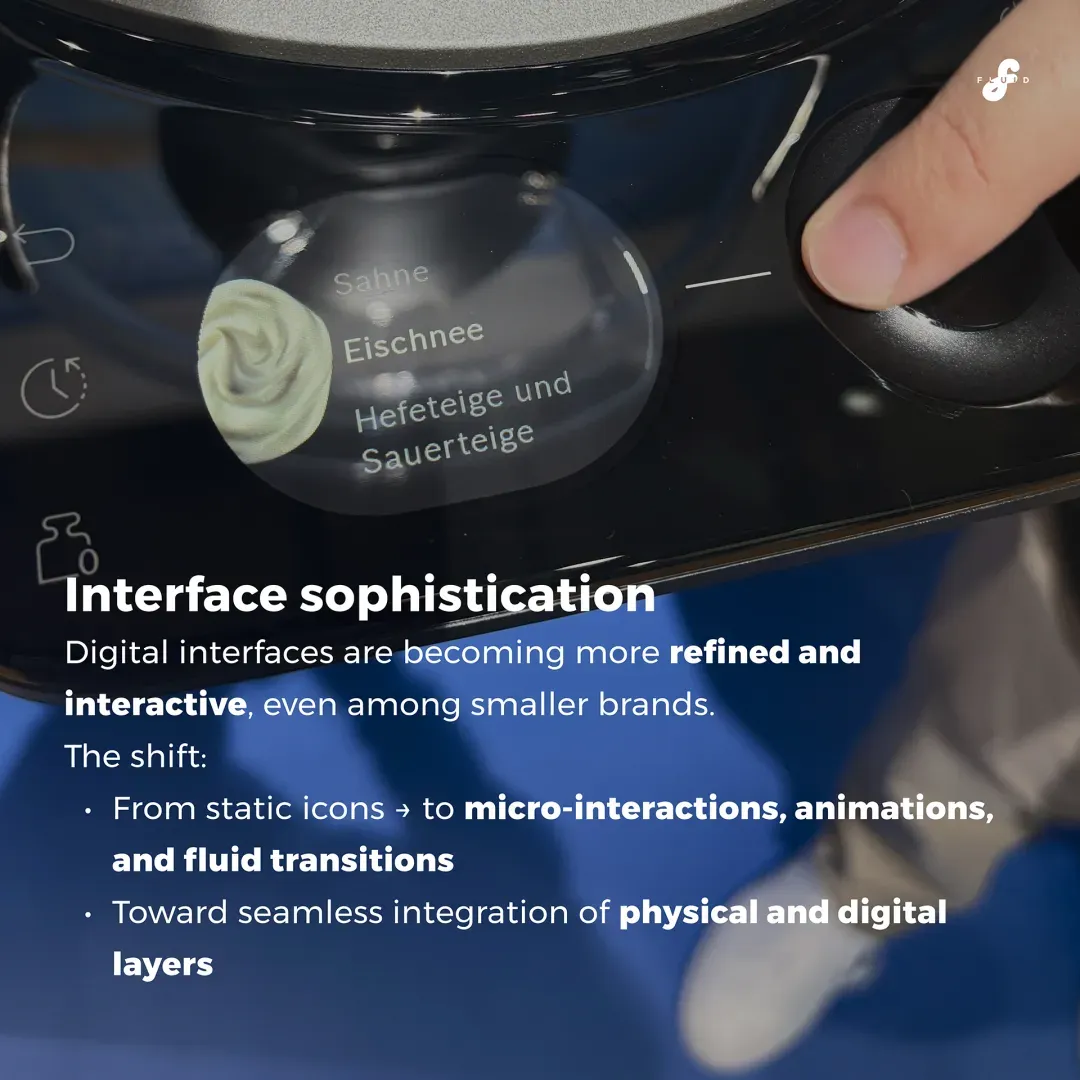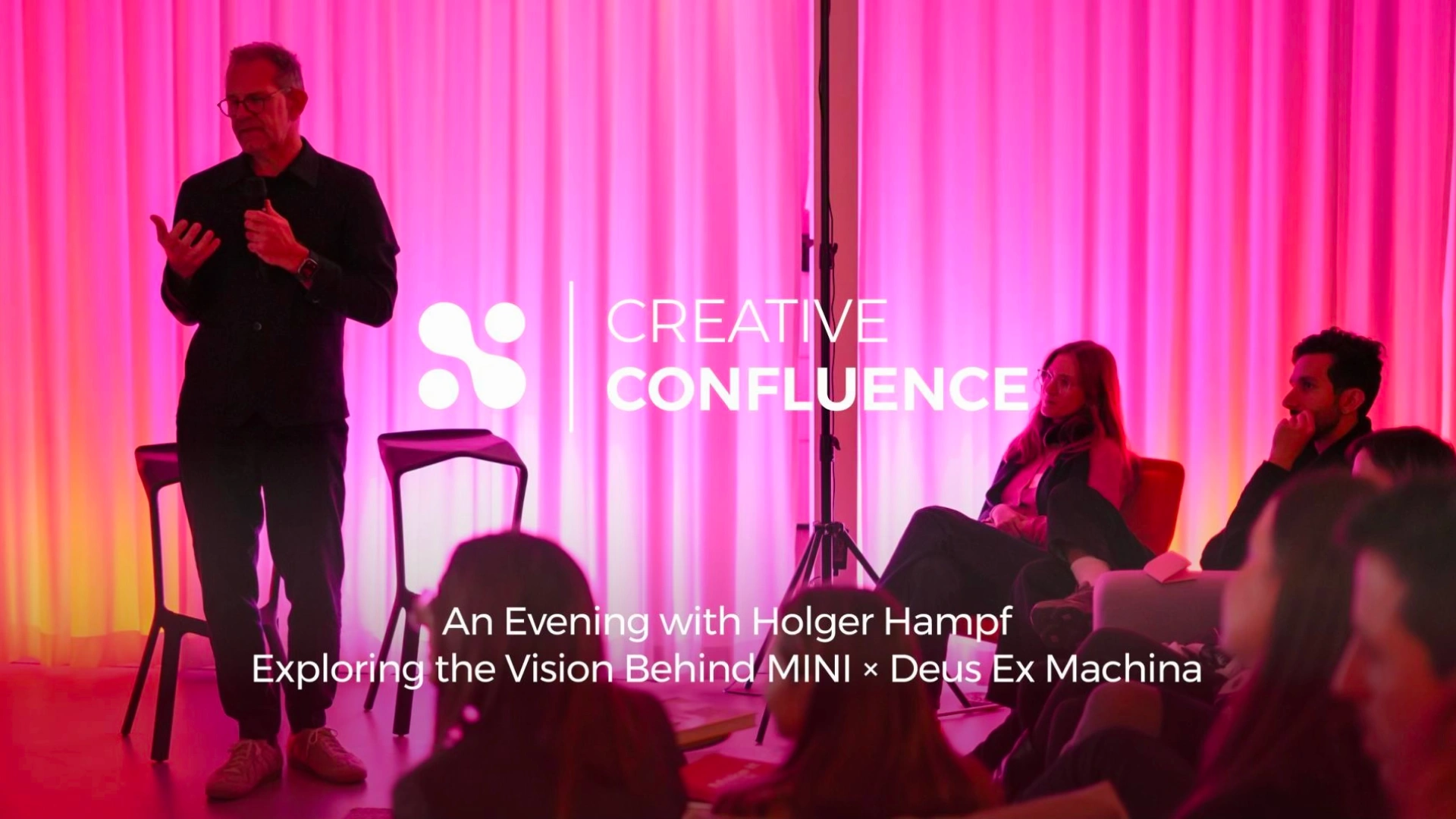

At FLUID Design we enjoy working in a multi-cultural team. My colleagues are from all over the world - Germany, Italy, France, Switzerland, India, Poland, Sweden… so is it any wonder, that our conversations are often driven by funny stories about language and culture differences.
For me, as a French designer in Germany who loves to travel, I am especially fascinated by the possibilities that AI opens up in the field of live translation.
What if AI made us forget about language barriers?
We travel to discover new places, to experience other ways of living and thinking, to meet people from other cultures, which is just wonderful if there wasn’t the language barrier.
Back in the days, to overcome this obstacle while traveling overseas, businessmen used to hire an interpreter to be able to negotiate the conditions of a contract with foreign clients. Backpackers had to rely on their precious bilingual dictionary to get to know their hosts and when it came to ordering takeaway at lunchtime in Bangkok, foreigners had to become very creative with their gestures to express what meat they would like to have. Usually, what they finally got could have been everything between chicken and fish. (I let you imagine the scene).
At least nowadays, due to modern technology that we rely on, the communication with foreigners seems to get a bit easier.
Thanks to AI-live translation, we are on a good way to be able to speak with everyone around the world without fearing to not be understood.
I lived in China for three years and during that time, my translation app became my best friend! It amuses me thinking back at the mornings when I was afraid to forget my phone, not because I would miss the last Instagram post but because of not being able to talk to people around me.
For me (and I think this applies to many other travellers), meeting the locals of the foreign place and become friends with them is the most enriching experience. And here we come to the trick of the language barrier. We probably all agree that what makes a face-to-face conversation interesting is the immediate reaction from both partners, so of course, when there is no common language, sharing stories becomes quite difficult.
In China, the best way for me to communicate with locals was to use WeChat, the Chinese’s most popular chat app. It has a built-in translation feature which enables immediate translations of Chinese characters into English sentences and vice versa. Thanks to WeChat, I had some kind of “face-to-face text conversations”. The fact that the translation software was integrated directly into the app offered an almost natural pace to this ‘conversations’ by reducing the time between the question and the answer. No more going back and forth from the chat-app to the translation-app. How great was that!

WeChat became my everyday life companion that helped me to get through my daily life, e.g. figuring out apartment issues with the landlord or explaining to my dentist which tooth hurt so much. I was even able to get some cooking tips from my pleasant neighbour! Three years of coexistence with my app, I could go on forever with examples.
Those written conversations helped me enormously and contributed a lot the fact that I very much enjoyed my experience of living in a country without speaking the language, but I also have to admit that those ‘talks’ always remained on a superficial level because texting is still not the same as speaking.
I am therefore even more excited by the promise of the new Google buds: instant speaking translation. With this feature, translation and communication will reach a new level, but does it mean that I won’t have to learn new languages anymore?
Is instant translation the end of learning new languages – or just the beginning?
In case of moving to a foreign country, this technology could, in the first place, enhance foreigners to take up contact with local people and therefore guarantee a basis level of communication with them. On top of that, an instant translation app could also support learning the language in an interactive and pleasant way. Today, learning a new language requires a lot of willingness and perseverance and let’s be honest, learning alone with books is not much fun. Many give up after a couple of weeks or months. My own experiences make me believe that learning a language by personally interacting with people is much more engaging and therefore more efficient.
Even when technology fosters interlingual conversations, it doesn’t replace a conversation in the same language. Speaking a foreign language is not just knowing the words – the cultural aspect and the ‘when to say what and how’ are fundamental components that are important in order to interact and communicate on a deeper level that goes beyond small talk conversations. Someone, who nowadays feels the need to learn a new language will definitely be eager to learn it in the future – probably even more through those apps. An instant translator could actually become a very powerful tool to help learning fast and in an efficient way.
Interesting collaborations between language-learning programs and translation platforms could take place, for example, filters could be applied to increase or decrease the amount of translation according to the user progress or the lessons could be automatically personalised by linking the subject of the exercise to a topic experienced previously by the user in real life.
Through globalisation, other languages are not really foreign and exotic anymore. In our interconnected world, we are all either directly or indirectly confronted with foreign languages and cultures. One of the world's biggest social trends is the rise of international marriages* – which goes along with involving families of different nationalities who, all of a sudden, have to cope with each other.
Calculations by Giampaolo Lanzieri, an Italian demographer, show that in France the proportion of international marriage rose from about 10% in 1996 to 16% in 2009. In Germany, from 11.3% in 1990 to 13.7% in 2010. Some smaller countries have much higher levels. Nearly half the marriages in Switzerland are international ones, up from a third in 1990. Around one in five marriages in Sweden, Belgium and Austria involves a foreign partner*.
That means that some family members might possibly be confronted with the inability to talk to the other. In this case, live-translation technology would be a real blessing. Magically communicating with foreigners without any effort would be very enjoyable.
Let’s take the example of a French grandmother. Her grandson decided to make her life complicated by presenting Nicole, his new German girlfriend to her. Learning French cannot be learned overnight even if Nicole would try it and studying German is definitely not part of grandmother’s plans, but it’s very likely that both would like to talk and become more familiar with each other. That’s where the magic of instant speaking translation happens!
Having the Google buds in mind, we can easily imagine these two ladies easily talking to each other.
To make sure that the conversation makes sense and seems natural, some context has to be given and some cultural background knowledge need to be kept in mind. The Buds need to be interpreted rather than strictly translated.
- “Have you eaten yet?” - “Yes, I’m fine and you?”
The promise from Google Buds is a “speaking translator that translates language instantly”, but I hope that in a near future we will be able to rather call it a ‘speaking translator that interprets language instantly”
The big challenge of live-translation is to interpret instead of translating words and sentences.
In order to really succeed in cross-cultural conversations, it is essential to also pay attention to the emotional aspect of the conversation. The cultural background of the translated language shouldn’t be forgotten or set aside.
Here an example to explain how crucial it is for the AI to understand the culture of a language to be able to give a proper meaning:
In Chinese “吃了吗 (chī le ma)?” literally means "have you eaten?”. It is used by some Chinese when welcoming friends, but contrary to your first believe, it is not an invitation to dinner but a polite way to ask after the guest’s well-being.
In that situation, the live-translator should understand the meaning of the question in this particular context and produce the English equivalent “how are you?”. Following that logic, the English answer “I’m fine, thanks” should then be translated into Chinese with ‘“吃了(chī le)" which means "yes, I have eaten”.
The interpreter – here the AI software – needs to incorporate the cultural and contextual framework of a given expression and offer the most appropriate meaning.
At FLUID we believe that Instant-Translator will open a lot of new possibilities.
For some people, this technology could become a powerful learning support, for others it will be an easy way to deal with challenging situations or even to fully enjoy holidays.
Designers are already thinking of interesting use cases to develop further this amazing technology and push forward world communication.
By making the complete experience of instant-translation accessible and efficient, the issue of language barrier will quickly become a thing of the past…
by Marine Demeyere
* The Economist, November 2011















